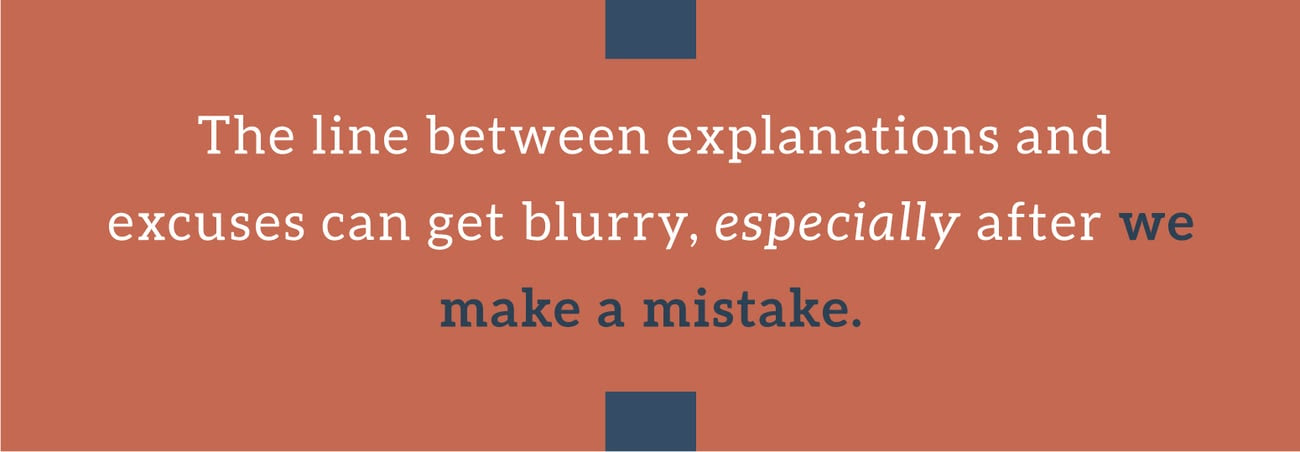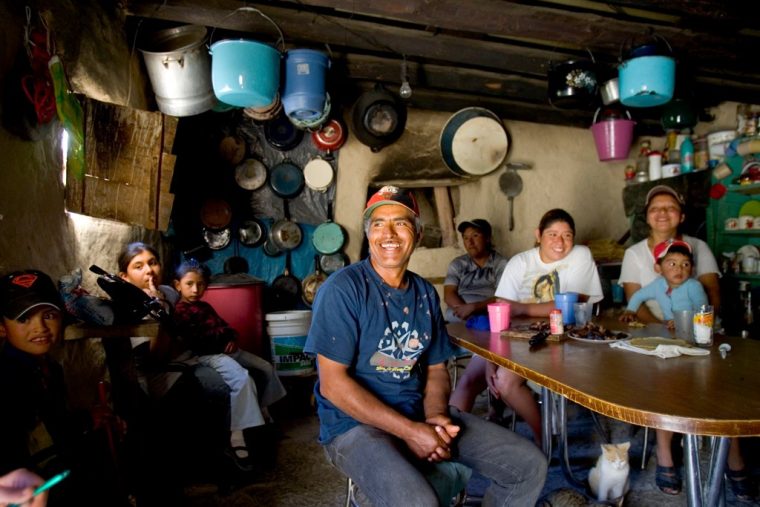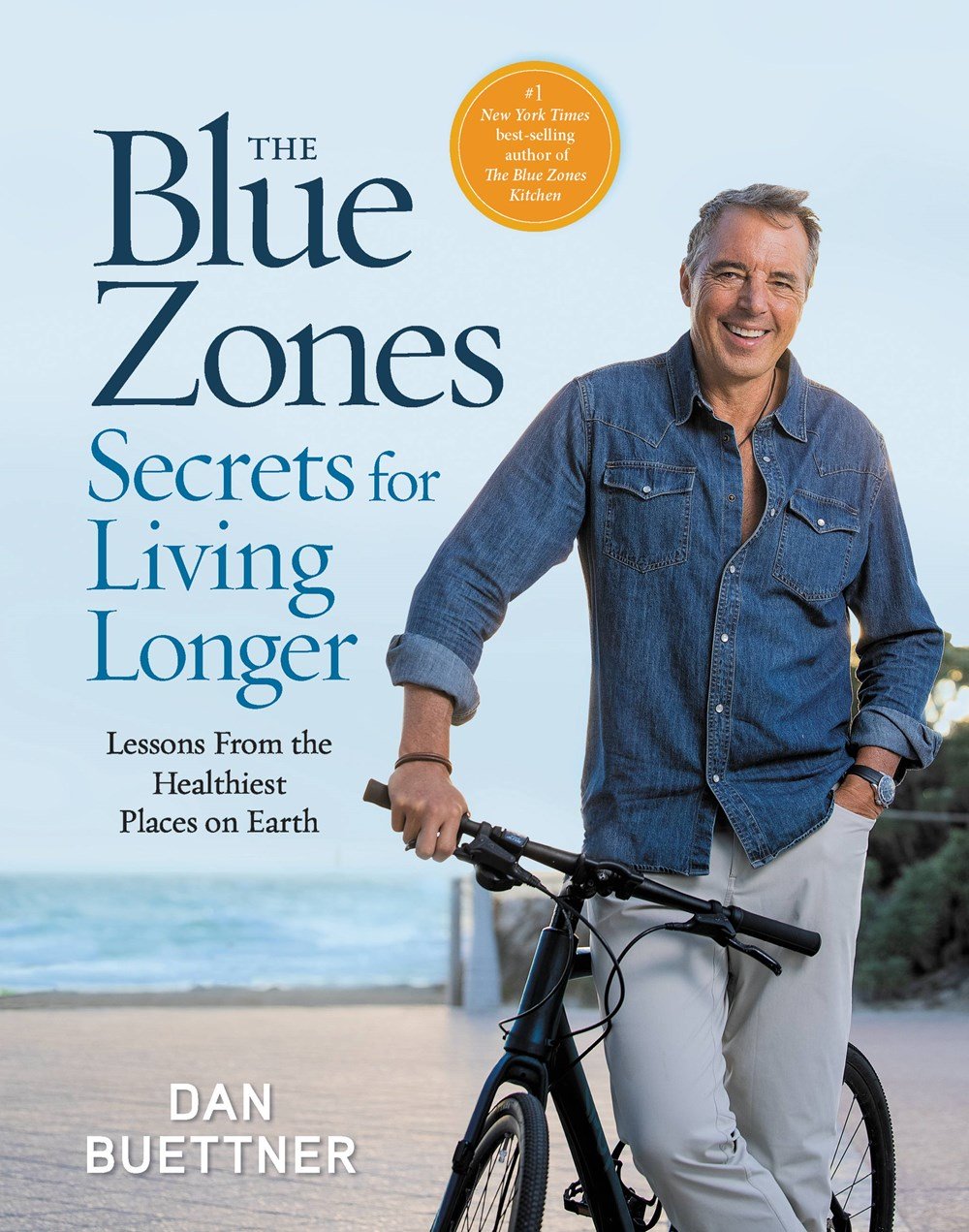Here’s something I think we all know, but don’t often discuss…

It depends on the mistake, of course. Sometimes, the blame is entirely yours and the only respectable thing to do is own it. Conversely, sometimes it was a blameless accident and you need only explain what happened to clear your name.
But a lot of modern adult problems live in the wide gray area between, and it’s often unclear where your choices end and the power of context begins. You shouldn’t blame yourself for things you really can’t control, but you also shouldn’t let yourself rationalize any bad decisions you’ve made. That can be a tough balance to strike, especially because we’re complex creatures who are figuring things out as we go.
The Standard American Diet is a good example of the kind of mistake I’m talking about. On one hand, its problems are too many and too complicated for any one of us to be responsible—but on the other hand, every one of us HAS to take responsibility for our own health, regardless of our circumstances, because nobody else is going to do it for us.
The essential difference between an excuse and an explanation is that excuses try to relieve you of responsibility, whereas explanations simply account for the facts as you know them. I’m not interested in excusing the Standard American Diet, but I am interested in explaining how we got here in the hopes that we can escape it.
In today’s main articles, we’ll be taking two old-fashioned stabs at America’s modern dietary struggles.
First, we’ll be examining the earliest chunk of American history that helps explain high-fructose corn syrup and how it got here and why it’s problematic. We’ll be restoring the facts and fuller context that most people don’t have.
Second, we’ll be re-introducing a word most Americans know, but don’t practice often enough: moderation. It’s how we stay healthy and sane while indulging what makes us human and happy—and I would suggest it’s the main ingredient missing from our diets (along with fruits and vegetables).

The great blessing of my dietary life is that, in my travels around the world, so many people have been willing to show me how they prepare their incredible food. I don’t have culinary talent so much as I have an accumulation of skills that I learned in the best possible way: by watching as an expert explains.
I’m proud of my books and newsletter, and I have no intention to stop writing. But recently, it’s occurred to me that I can’t share everything I know about cooking until I show you what I know about cooking.
That’s why I created the Blue Zones Cooking Course. Just watch and you’ll learn everything you need to know to cook your way to 100 years old—and enjoy it the whole way there!
Today is the first day of the inaugural course, I hope you’ll join me.

You’ve probably heard Marshall Goldsmith’s famous aphorism “what got you here won’t get you there,” and it’s just as true in this newsletter. For each entry in What Got Us Here, I’ll select a problematic topic in the Standard American Diet and retrace our steps through history so we can better understand our present-day problems and (hopefully) take healthier steps forward in the future.
This is Part 2 of a four-part series on high-fructose corn syrup (HFCS).
As I explained last time in Part 1, high-fructose corn syrup (HFCS) is a “forest, not trees” kind of problem. It’s not harmful unto itself—it’s barely any different from table sugar—but at the same time, it is emblematic of the bigger problems that led us here, to this point where chronic overconsumption of sugar causes health problems for tens of millions of Americans.
So to understand the deeper reasons for all the hubbub around HFCS, we’ll start our high-speed tour of the events, players, and forces in American history that got HFCS where it is today. Parts 2 through 4 will cover that history in chunks—and though HFCS won’t actually exist until the period covered in Part 4, everything I mention will be leading up to it in some way.
Now then! Let’s turn the clocks back to the late 1700s.
As you know, the first 13 states were originally British colonies; they were established to enrich the British economy with unfinished goods and raw materials, including much of the food they ate. It’s no surprise that the American colonies had more farmers than England; in fact, that was the point. The British Empire wanted us to be subservient suppliers, not serious competitors.
So the American colonies had a lot of farmers from the start, and then they attracted even more farmers from Europe with the promise of land ownership. Then all of those farmers won a war against their professionally-trained imperial opponents and a new nation was born.
Around that time, Thomas Jefferson proclaimed that a “nation of farmers” was actually the ideal group of people for founding a democratic republic. Farmers are self-sufficient, practical to a fault, and (Jefferson argued) closer to God because they work in nature; these are people who can think for themselves, provide for their families, and cooperate together without ever deferring to a Crown.
Self-governance was a radical idea back then… but not to farmers.
Even once the Revolution was over, most Americans kept farming by choice—and when I say “most Americans,” I do mean an actual, literal majority. In 1800, a whopping 75–90% of America’s population was engaged in agriculture, compared to 36% of England’s population.
We really could feed ourselves, that’s for sure. But as we settled into post-revolution normalcy, we started to learn how market forces can apply pressure in unexpected ways, especially when the economy is built on agriculture (see endnote for a bit more on that).
Before I launch into today’s big example, bear in mind: high-fructose corn syrup wasn’t invented until the 20th century, but its proliferation in today’s market follows patterns that were observed in America back in the 1790s, if not earlier.
So here’s the big example (and HFCS parallel) from Jefferson’s time…
From roughly 1800 to 1830, America was drunk off its ass. The average person drank five times as much alcohol as we do nowadays, and most of it was whiskey.
Why, you might ask, did we drink so much whiskey?
We’d have given a handful of excuses at the time—food was bland, life was boring, your friends were already drinking, and so on—but the main driving force behind our multi-decade whiskey binge was, in a word, supply. Whiskey was cheap and accessible because the market was flooded with it.
And why, you might ask, was the market flooded with whiskey?
Because we harvested too many amber waves of grain. ?
In the event of a grain surplus, farmers’ options boiled down like this: let the extra rot, sell it for nearly nothing, or make whiskey from it. Economically speaking, whiskey wins by a country mile; it doesn’t go bad, it’s way more compact than grain, and it not only adds value but even appreciates in value over time. For the same reasons, whiskey was a common currency back then… and this effectively means that distilling whiskey was like printing cash. (Does America’s bone-deep veneration of whiskey make more sense now?)
When you had an entire nation of farmers doing this, a grain surplus became a whiskey surplus; this naturally caused the price of whiskey to drop, which meant more people could afford more of it. But the plot thickens because, remember, whiskey was also a currency at the time—so when the supply of whiskey increased, its value (buying power) also dropped, and anyone already holding whiskey then had less reason to see it as money and more reason to drink it.
Bottom line? Both sides of the market were compelled to drink like fish, and nothing stopped us because we didn’t know everything we know today about alcoholism.
Looking back, it’s impossible to separate the economic savvy of whiskey production from the public-health mess that emerged as a result. We thought we were creating value (and we were), but it turns out we were also creating a monster.
Once the frat-house jokes have passed, it’s easier to see what’s deeply troubling about this period: when a mind-altering substance became cheap and widely available in America due to economic forces, we binged it for decades before anything was really able to rein us in. It took us a very long time to see the problem.
Does any of this sound familiar to you?
I would suggest that sugary drinks are to 21st-century America as whiskey was to 19th-century America. They’re cheap, they’re addictive, they’re everywhere, and they’re slowly killing us in ways most people don’t really understand. High-fructose corn syrup (or sugar more generally) won’t kill a binge-drinker as fast as frontier whiskey, but it’ll kill them just the same… and despite being smarter than our forebears, our multi-decade sugar-drinking habit still has no end in sight.
We’ll cover the next hundred-odd years of HFCS-focused American history in Edition 20. Stay tuned!
ENDNOTE: Agricultural markets can be particularly finicky because both supply and demand are inelastic; in other words, producers can’t really change (or even predict) how much they’ll harvest in a given year, and consumers can’t really change how much they’ll need to eat. Economists call this the Farming Problem.

People living in blue zones aren’t actively trying to cultivate habits for long life. Their environments are set up in ways that naturally support healthy behaviors. In this section of Eating to 100, I will share one simple habit you can incorporate into your life. Do it long enough, it becomes part of how you live. Build up enough of these habits, you’ll likely add years to your life and life to your years.
Today, I want to talk about a very general (but very important) kind of habit that does immeasurable good in keeping people both healthy and sane. I’m talking about moderation, which is largely synonymous with temperance.
Moderation is a very old idea; in fact, the Greeks had useful things to say about it almost three thousand years ago. To Aristotle, moderation was the most important virtue because it makes other virtues (as we know them) possible. Take, for example, courage: too little of it makes you a coward, but too much of it makes you a fool, and moderation between those extremes is what gives us the right amount of courage. And so on with other virtues.
But this newsletter is called Eating to 100, so I want to talk specifically about dietary moderation—in other words, how we can help keep ourselves from eating and drinking to excess in a world that makes it unconsciously easy to do so.
One of the themes that I come back to again and again is the power of our environments over our choices. Environment doesn’t have total power over our dietary choices, but it has far more than we realize; we Americans are especially prone to thinking that self-control should be equally easy no matter where you are, and that just isn’t true in practice.
Oscar Wilde once said that the only way to get rid of a temptation is to yield to it, and he actually had a point; in the time since, science has validated the idea that self-control is like a muscle, and we cave when that muscle gives out. So it stands to reason that some environments are more strenuous to that muscle than others, and that you’ll tend to cave faster and more often (and have the health outcomes to show for it) when you spend a lot of time in such places.
Personal self-control matters, but I think we overemphasize it and, in the process, most of us overlook both the influence of environment and our ability to change our environments, especially our homes. As strange as it might sound, home improvement (when done purposefully) sometimes doubles as self-improvement, or makes certain self-improvements possible.
So here are five of my favorite environmental tweaks to help you moderate your everyday eating and drinking decisions:
Consider smaller dinner plates. The average American dinner plate has grown over time, and with it, the portions that we tend to expect on those plates (to fill the space, if nothing else). 12 inches is probably too big, 10 inches is better, and 8 inches is best if you’re taking this really seriously.
That trick, by the way, is also a good way to counterbalance the “clear your plate” mentality if that’s one of the habits you’re struggling to shake. The smaller the plate, the less likely it is that eating everything on it would be too much.
Don’t leave food out. It’s one thing to leave out fruit, but it’s quite another to have cookie jars and snack bowls just sitting around, waiting for people to empty them one handful at a time. To the extent that snacking is one of the big weaknesses Americans need to moderate, a big part of the problem is the way we can lose track of how much we’ve eaten (see next tweak).
This advice also applies at mealtime. This won’t surprise you, but studies have found that people eat more on average when the meal is served family-style, and this is because people are able to reach for seconds and thirds without thinking about it. So unless the meal has to be served family-style, it’s best to plate the meal and then put any leftovers away.
Portion your snacks. You don’t have to be super strict or precise about this, but at a bare minimum, snacks shouldn’t be bottomless; it’s never a great idea to bring (for example) the entire bag of potato chips to the couch for a movie. Whatever you’re allowing yourself for the snack, portion it out and then put the rest completely away.
Snack-packaged foods like the 100-calorie packages of nuts are a good idea. You do pay a premium, but to some people that premium is worth more than just convenience; it’s a small investment that helps with moderation and thereby health. Short of that, I would suggest a small, dedicated set of bowls for snacks; that way, even if you have a big container of nuts in the pantry, you can fill one of those small bowls and put the container back.
Carry a dedicated water bottle. I could probably write an entire article just about moderating your daily drink choices, but for today’s purposes I’ll pick a smaller battle: how to help you drink more water, regardless of what else you’re drinking during the day.
My single best suggestion is to get yourself a 750mL or 1L water bottle (if you don’t already have one), designate it as Your Official Water Bottle, and—this is where environment comes into play—get into the habit of bringing it along with you. You don’t have to bring it everywhere, but it should be within reach for most of a typical day, the idea being that most people’s first step towards drinking more water is to have it handy in the first place.
Involve other people as often as possible, and isolate yourself as little as possible. You’re far likelier to establish and reinforce good habits if you have somebody who’s doing the same thing with you—one of the few times peer pressure is useful and healthy. And though it’s not always practical to involve others in snacks (one of the main areas of concern for American diets), you’re much likelier to mark an official end to snacking when you share the allotted snack with someone else.
If nothing else, be wary of self-isolation and its effects on dietary habits. I understand that many of us need our personal space and privacy and maybe even a closed door—but it’s worth noting that our dietary behaviors are different when nobody’s watching, and this is something to think about if you keep a stash of snacks in your private space(s).

Sweet & Salty Peanut Butter Date Bites
Ingredients
Ingredients
- 8 dates
- 3 Tbsp peanut butter
- Pinch pink salt

The Method
- Remove pits from the dates.
- Spread peanut butter inside each date.
- Sprinkle with a touch of salt (optional).
Enjoy!






